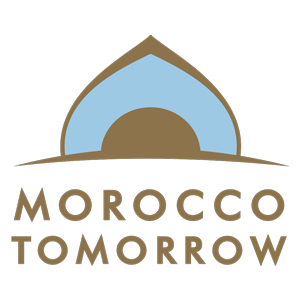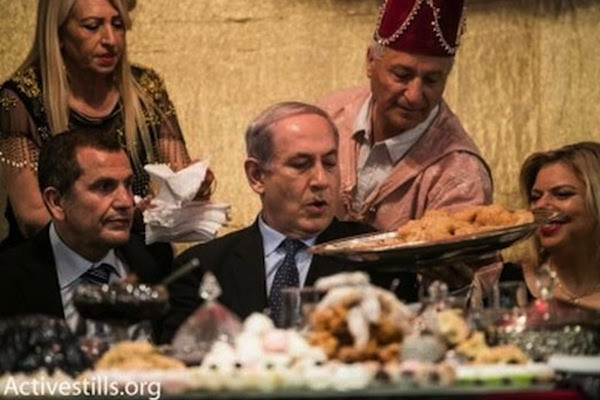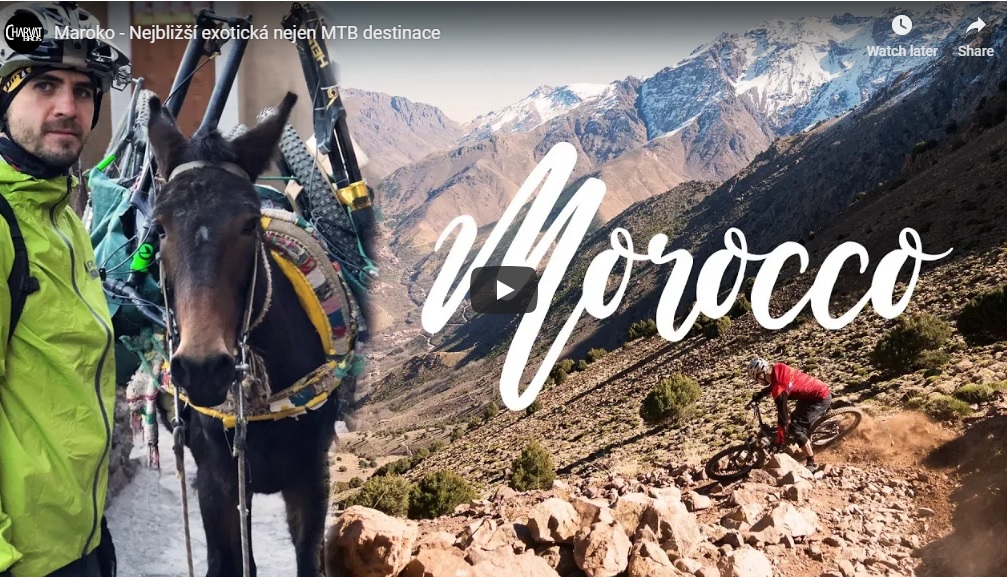972 Magazine
By Einat Levi
Since it gained independence in 1956, Morocco’s national identity has transformed from a homogenous Arab one to multicultural. Israel could stand to learn a lesson or two.
Prime Minister Netanyahu and Sara Netanyahu (right) during a Mimouna celebration. (photo: Activestills.org)
Two weeks ago, the Knesset passed the controversial Jewish Nation-State Law. Sixty-two members of Israel’s parliament voted in favor, 55 opposed, and two abstained. Several sections of the law provoked a political and public storm. For instance, Article 4 defines Hebrew as the official language of the State of Israel, while for the first time in Israeli history, Arabic is defined as having a “special status.” What does this actually mean? The law does not provide a clear enough explanation.
Prior to the law’s passing, Arabic was considered Israel’s second official language, a fact that improved Israel’s image in the world due to its recognition of the Arab minority’s culture and identity. This helped Israel present itself as a democratic state, while acting as a bridge between the country and the Arab-speaking region. It also recognized the culture and identity of Jews from Arab countries, for whom Arabic is an inseparable part of their heritage. The fact that Arabic was an official language gave Arab speakers in Israel a sense of both hope and belonging, which is why a change in its status may exact a high price both internally as well as externally.
At the western most tip of Africa sits Morocco, a country that can serve as a fascinating case study on the development of national and cultural identity. Although Morocco is not the most economically advanced country in the world, and has quite a way to go in terms of human rights and democracy, it has, over the years, succeeded in formulating a model of an inclusive national identity, with the understanding and belief that difference and diversity should be encouraged and emphasized.
This wasn’t always the situation. When Morocco declared independence in 1956, it had to formulate a clear national identity after years of colonial influence. Morocco chose an Arab national identity, and through an intensive “melting pot” process, it molded its state symbols and institutions according to this homogenous identity. For example, Morocco joined the Arab League, Arabic was defined as the official language of the state, and some of the streets in the kingdom were given Arabic names.
In the wake of the decision, Morocco underwent an accelerated process of Westernization, which came at the expense of other identities in the kingdom, specifically that of the Amazighs, which make up half the population. The Amazighs, also known as Berbers, are considered the original residents of Morocco and North Africa. They are a separate ethnic group and speak Amazigh languages. The exclusion of Amazigh identity was manifested in banning the group’s languages in schools, on state television and radio broadcasts, and forbidding parents from giving their children Amazigh names on their ID cards. Instead, Amazigh citizens are given Arabic names, which they use at school and vis-à-vis state institutions, as well as an Amazigh name, which they use with family and friends.
This led to numerous Amazigh protests over the years, especially during the reign of King Hassan II. The protesters called to increase Amazigh representation in the Moroccan narrative, bridge socioeconomic gaps, make public services available, and promote employment and equitable distribution of resources. All this drastically changed with King Mohammed VI, who took power in July 1999, and who vowed to connect every home to electricity and water and laid down basic infrastructure in the Amazigh villages. Under the king, Morocco established the Royal Institute of the Amazigh Culture, which works to revive Amazigh languages and to integrate the Amazigh heritage into the national curriculum and encourage research on the topic.
While the situation and representation of the Amazigh improved, the protests did not cease. In February 2011, the winds of the Arab Spring blew through the streets of the country, and hundreds of thousands of Moroccans protested across the kingdom. The king, who feared the protests could destabilize the country, took steps to placate the demonstrators, including by changing the constitution. In July 2011, the kingdom passed an amendment to the constitution by referendum, which redefined Morocco’s national identity as a Muslim state. This time, however, the amendment emphasized the country’s commitment to the rich and diverse heritage of all its residents:
“A sovereign Muslim State, attached to its national unity and to its territorial integrity, the Kingdom of Morocco intends to preserve, in its plentitude and its diversity, its one and indivisible national identity. Its unity is forged by the convergence of its Arab-Islamist, Berber [Amazighe] and Saharan-Hassanic [Saharo-Hassanie] components, nourished and enriched by its African, Andalusian, Hebraic and Mediterranean influences. The preeminence accorded to the Muslim religion in the national reference is consistent with the attachment of the Moroccan people to the values of openness, of moderation, of tolerance and of dialogue for mutual understanding between all the cultures and the civilizations of the world.”
The amendment also brought about a change in the status of the Tamazight language, which for the first time became an official language of the state, as per Article 5 of the Constitution:
Arabic is the official language of the State. The State works for the protection and for the development of the Arabic language, as well as the promotion of its use. Likewise, Tamazight [Berber/Amazighe] constitutes an official language of the State, being common patrimony of all Moroccans without exception.
The wording of the amendment was able to emphasize the commonalities between Arabs and Amazighs without undermining the status of Arabic or Morocco’s Arab identity. And while the wording does not necessarily reflect the situation on the ground, it does shape perceptions and reality, cultivating one of the central values of Moroccan nationalism, according to which difference and diversity are a source of strength.
The Moroccan case is not identical to that of Israel. And yet, the development of a national hegemonic Arab identity in Morocco to a heterogenous and multicultural one could serve as a lesson for the Jewish state.
Einat Levi develops partnerships with Morocco and explores Israeli-Moroccan relations with Mitvim — the Israeli Institute for Regional Foreign Policies. This article was first published in Hebrew on the Forum for Regional Thinking. Read it here.






